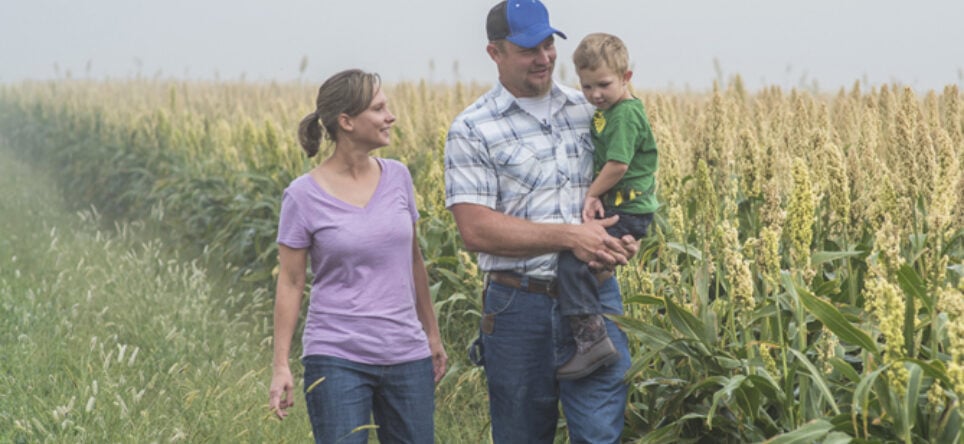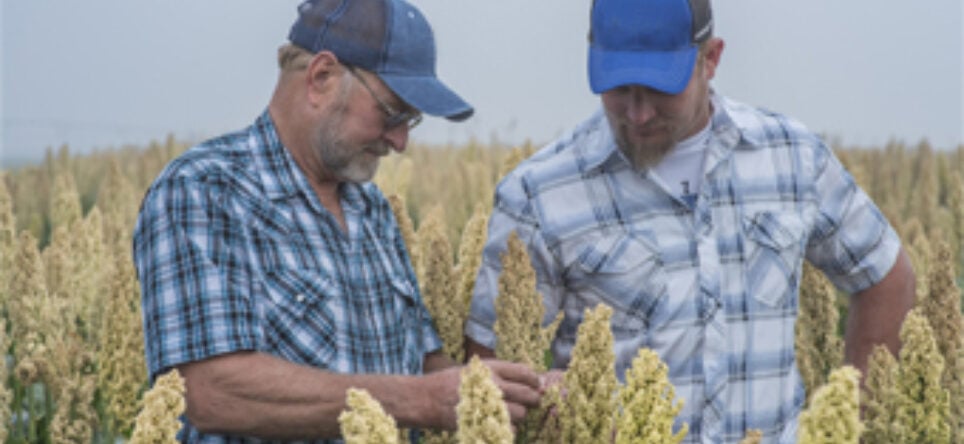Meet Our Growers: Taylor Family
Sorghum is a low input, water-sipping crop. Learn more about our sorghum growers.

When choosing which crops to grow, weather patterns and climate are major factors. For grain farmers in drier areas of the United States, sorghum has become an exceedingly successful option. Growing sorghum has allowed many farmers to produce a quality product that supports long-term land stewardship—an important goal of any good farmer.
To successfully adapt growing practices and business strategy, you must be willing to take risks—something that sorghum grower Tom Taylor of Haviland, Kansas, is very familiar with. “Farming is not easy money. It takes a lot of work and management, and there’s a lot of risk involved. The risk factor is really high,” said Tom.

Tom went to college to study agronomy with the intent of coming back to his family’s farm. As his dad nears retirement, Tom has been cultivating his own farm and gradually taking over some of his father’s land. With this shift, Tom has added his own farming style to the business strategy. “I’m pretty aggressive when it comes to growing. I shoot for top yields, not an average crop,” he explained. “I don’t cut corners, and I strive to do the best. I’m always looking to try new things."
The desire to try new things separates the successful farms from the ones that fail. At the end of the day, farming is a business. For sorghum growers like Mike Demuth of Ford, Kansas, that meant making the switch to growing food-grade sorghum.
“We were approached by ADM to grow food-grade sorghum because they knew we were good grain farmers and good managers,” explained Mike. “We’ve done the best that we can to please them, and I think we’ve done a good job. You put a little more work into growing food-grade sorghum, but I think it’s worth it.”
By “a little more work,” Mike means hand-weeding his sorghum fields. “If you try something and it doesn’t work, you’ve got to make it work. Sometimes that means doing it by hand,” said Mike.
According to Mike, this is a common misconception that people have about grain farmers. “There’s a lot that goes into farming that people just don’t realize. Everything’s not just done by tractors. And it’s not something that can just be set in stone. What you do one year may not work the next and you need to go back to the drawing board. You always need to be willing to compromise and change.”
Mike’s son, Luke Demuth, is a fourth-generation grain farmer who grew up on his family’s farm. Even though growing sorghum is relatively new for Luke, his ability to change and adapt is vital to his farming success.
“It’s an alternative to wheat for us because we don’t always get the moisture that we need to grow a successful wheat crop,” said Luke, who farms with his wife and family in Bucklin, Kansas. “Compared to wheat, a sorghum crop takes less time to grow, although it also requires more care.”
The most misunderstood part about farming for Luke is farm management. “Farmers aren’t just driving around in a tractor watching crops grow. You have to market your crops after harvest, create and stick to a budget, maintain expensive equipment and track fluctuating commodity prices. You have to be optimistic or you won’t succeed.”
From tending the family farm that’s been passed down for generations, to setting out on a bold new path, each grain farmer has his or her own story to tell. That’s why we started the ADM Milling Grower Connect program. We hope to give consumers a better idea about what goes into creating the food that’s on your plate and to put a face behind each product.